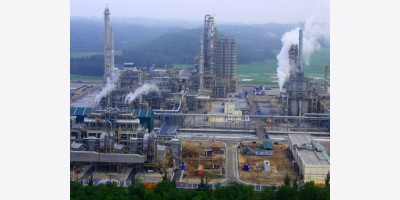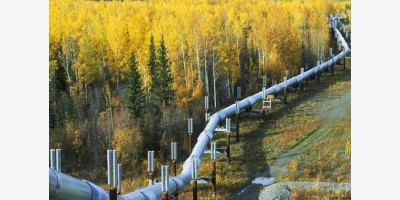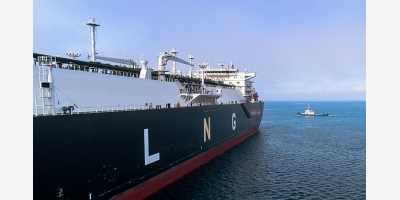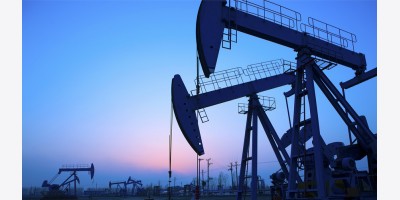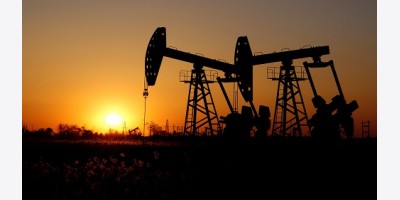
In its 2019 World Energy Outlook (WEO), the International Energy Agency projects in its “current policies” scenario that energy demand rises by 1.3%/year to 2040, with increasing demand for energy services unrestrained by further efforts to improve efficiency. While below the 2.3% growth seen in 2018, IEA said, it would result in a relentless upward march in energy-related emissions, as well as growing strains on almost all aspects of energy security. This scenario shows what happens if the world continues along its present path, without any additional changes in policy.
The “stated policies” scenario (formerly the “new policies” scenario), by contrast, incorporates today’s policy intentions and targets. In this scenario, energy demand rises 1%/year to 2040. Low-carbon sources, led by solar photovoltaics (PV), supply more than half of this growth, and natural gas, boosted by rising trade in LNG, accounts for another third. Oil demand flattens out in the 2030s, and coal use edges lower. Some parts of the energy sector, led by electricity, undergo rapid transformations. Some countries, notably those with “net zero” aspirations, go far in reshaping all aspects of their supply and consumption. However, the momentum behind clean energy technologies is not enough to offset the effects of an expanding global economy and growing population. The rise in emissions slows but, with no peak before 2040, the world falls far short of shared sustainability goals.
“What comes through with crystal clarity in this year’s [WEO] is there is no single or simple solution to transforming global energy systems,” said IEA Executive Director Fatih Birol. “Many technologies and fuels have a part to play across all sectors of the economy. For this to happen, we need strong leadership from policymakers, as governments hold the clearest responsibility to act and have the greatest scope to shape the future.”
Oil
In the stated policies scenario, global oil rises by about 1 million b/d/year on average until 2025. Oil use in passenger cars peaks in the late 2020s and during the 2030s demand increases by an average of only 100,000 b/d/year. There is no definitive peak in oil use overall, as there are continued increases in petrochemicals, trucks, and the shipping and aviation sectors. The largest increases in production between 2018 and 2040 come from the US, Iraq, and Brazil while the share in oil production from countries in the Organization of Petroleum Exporting Countries plus Russia falls to 47% for much of the 2020s—a level not seen since the 1980s.
Growing trade volumes and rising geopolitical risks surrounding key choke points in oil markets highlight the need for policymakers to keep a close watch on oil security. By 2040, nearly 26 million b/d of oil passes through the Strait of Malacca in the stated policies scenario and about 20 million b/d through the Strait of Hormuz. Any impediment to shipments could materially tighten markets. Emergency oil stocks continue to play an important role in helping to weather potential disruptions.
In the “sustainable development” scenario, determined policy interventions lead to a peak in global oil demand within the next few years. Demand falls by more than half in advanced economies between 2018 and 2040 and by 10% in developing economies. By 2040, half of cars are electric as are most urban buses; almost 2 million boe/d of biofuels are consumed in the aviation and shipping sectors, and almost 20% of the fuel used by trucks worldwide is low-carbon. The only sector to see demand growth is petrochemicals; while the rate of plastics recycling more than doubles (from about 15% today to 35% in 2040), demand for oil as a feedstock nonetheless increases by almost 3 million b/d to 2040.
US shale
Shale output from the US is set to stay higher for longer than previously projected, reshaping global markets, trade flows, and security, the report said. In the stated policies scenario, annual US production growth slows, but the US still accounts for 85% of the increase in global oil production to 2030, and for 30% of the increase in gas. By 2025, total US shale output (oil and gas) overtakes total oil and gas production from Russia. In this scenario, US tight crude oil production rises from 6 million b/d in 2018 to a high point of 11 million b/d in 2035, the majority of which comes from the Permian basin, which by itself produces more crude oil than the continent of Africa soon after 2030. However, alongside uncertainties on the demand side, changing assumptions on future technology development and resource availability could each increase or decrease US tight crude oil production in 2030 by more than 2 million b/d. Concerns about social and environmental issues, such as the level of flaring in the Permian basin, and the ability of operators to raise affordable finance are other important variables that could affect production prospects.
The higher US output pushes down the share of OPEC members and Russia in total oil production, which drops to 47% in 2030 from 55% in the mid-2000s. Whichever pathway the energy system follows, the report said, the world is set to rely heavily on oil supply from the Middle East for years to come.
Natural gas
In the stated policies scenario, overall global gas demand in 2040 is like 2018 WEO projections, as a slight upward revision to the use of gas in industry compensates for a downward adjustment to gas consumption for electric power generation. Demand in the US has edged higher, offset by a sharper decline in the European Union, as well as by slightly slower projected growth in China. Production growth is dominated by shale gas, which increases at a rate of almost 4% each year, four times faster than conventional gas.
In the sustainable development scenario, gas consumption increases over the next decade at an average rate of 0.9%/year before reaching a high point by the end of the 2020s. After this, accelerated deployment of renewables and energy efficiency measures, together with a pickup in production of biomethane and later of hydrogen, begins to reduce consumption.
By 2040, gas demand in advanced economies is lower than current levels in all sectors apart from transport, where demand remains broadly comparable to the level reached in the stated policies scenario. In developing economies, gas growth in the power sector rises to 2030 but falls back due to a growing share of renewables, while growth in industrial demand is half the level of the stated policies scenario. Although absolute consumption falls, gas gains market share at the expense of both coal and oil in sectors that are difficult to decarbonize, such as heavy-duty transport and the use of heat in industry. Even though gas-fired electric power generation declines, capacity rises compared with today because of the role of gas in providing power system flexibility.









